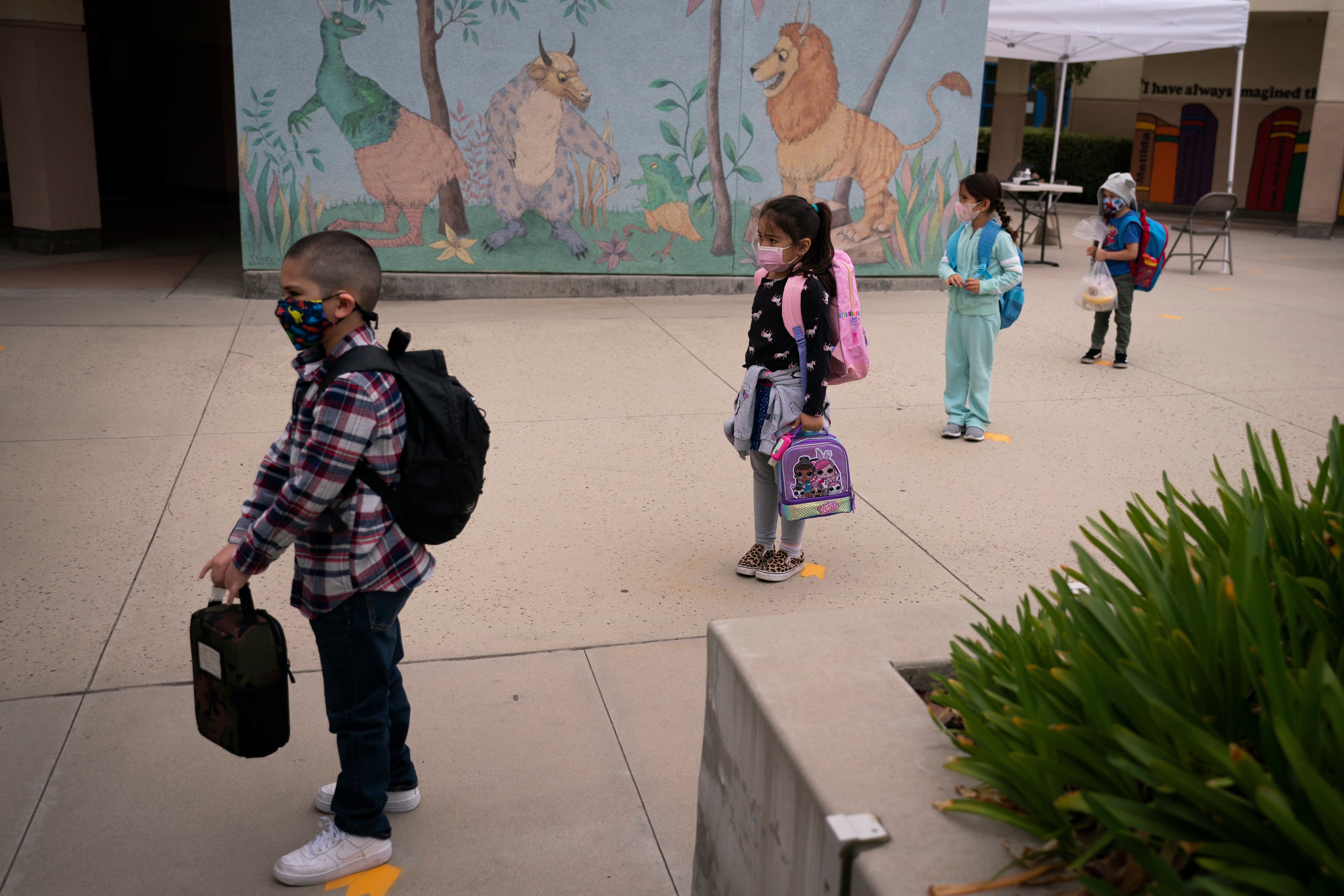US kindergarten vaccination rate dropped again, data shows
Vaccination rates for U.S. kindergarteners are down again, and federal officials are launching a new campaign to try to bring them up

Your support helps us to tell the story
From reproductive rights to climate change to Big Tech, The Independent is on the ground when the story is developing. Whether it's investigating the financials of Elon Musk's pro-Trump PAC or producing our latest documentary, 'The A Word', which shines a light on the American women fighting for reproductive rights, we know how important it is to parse out the facts from the messaging.
At such a critical moment in US history, we need reporters on the ground. Your donation allows us to keep sending journalists to speak to both sides of the story.
The Independent is trusted by Americans across the entire political spectrum. And unlike many other quality news outlets, we choose not to lock Americans out of our reporting and analysis with paywalls. We believe quality journalism should be available to everyone, paid for by those who can afford it.
Your support makes all the difference.Vaccination rates for U.S. kindergarteners dropped again last year, and federal officials are starting a new campaign to try to bring them up.
Usually, 94% to 95% of kindergarteners are vaccinated against measles, tetanus and certain other diseases. The vaccination rates dropped below 94% in the 2020-2021 school year, during the first year of the COVID-19 pandemic.
A Centers for Disease Control and Prevention study released Thursday found rates dropped again in the 2021-2022 school year, to about 93%.
The pandemic disrupted vaccinations and other routine health care for children, and also taxed the ability of school administrators and nurses to track which children weren't up-to-date on shots. CDC officials said increased loss of confidence in vaccines is another likely contributor.
“I think it's a combination of all those things," said Dr. Georgina Peacock, director of CDC’s immunization division.
Health officials focus on kindergarten because it's when most children enter school systems. Public schools typically require vaccinations as a condition of attendance, though some exemptions are allowed.
Such exemptions were up slightly last school year, but the CDC’s Shannon Stokley said they are not the main driver of the decrease. Rather, more schools relaxed their policies to allow enrollment while giving families a grace period to get shots, she said.
The new numbers suggest that as many as 275,000 of kindergartners lack full vaccine protection.
Falling vaccination rates open the door to outbreaks of diseases once thought to be in the rearview mirror, experts say. They point to a case of paralytic polio reported last year in New York, and to recent measles surges in Minnesota and Ohio.
Those outbreaks coincide with anecdotal and survey information suggesting more parents are questioning bedrock childhood vaccines long celebrated as public health success stories.
A Kaiser Family Foundation poll last month found less support among parents for school vaccine requirements vs. a 2019 survey.
“It's crazy. There's so much work to be done,” said Dr. Jason Newland, a pediatric infectious diseases doctor at St. Louis Children's Hospital and vice chair for community health at Washington University.
Other physicians have told him that more parents are being selective about which vaccines to give their kids. CDC data reflected that: The chickenpox vaccination rate fell more sharply than the rate for shots against measles, mumps and rubella.
This week, the CDC launched a campaign called “Let's RISE" — an acronym for Routine Immunizations on Schedule for Everyone. It includes new educational materials to help doctors talk to families about vaccinations, as well as information for families who have questions about the shots.
Building trust in vaccinations “is something that has to happen at the local and community level," Peacock said.
Thursday's CDC study was based on public school kindergarten vaccination reports from 49 states, and reporting on private schools from 48 states. Montana did not report data.
Rates vary across the country. CDC officials noted significant increases in a few states, including Hawaii, Maine, Maryland and Wyoming. But most states saw declines, with the largest drops in Mississippi, Georgia and Wisconsin.
___
The Associated Press Health and Science Department receives support from the Howard Hughes Medical Institute’s Science and Educational Media Group. The AP is solely responsible for all content.